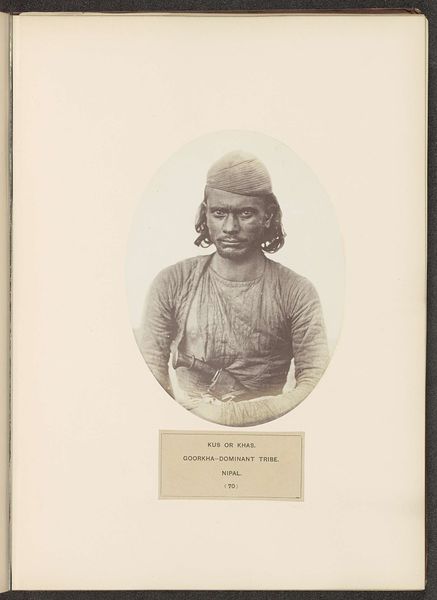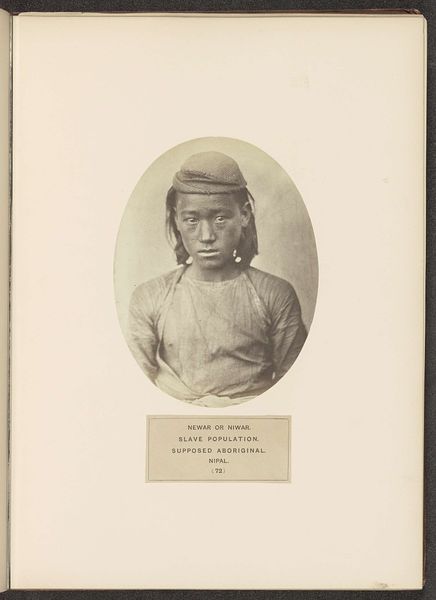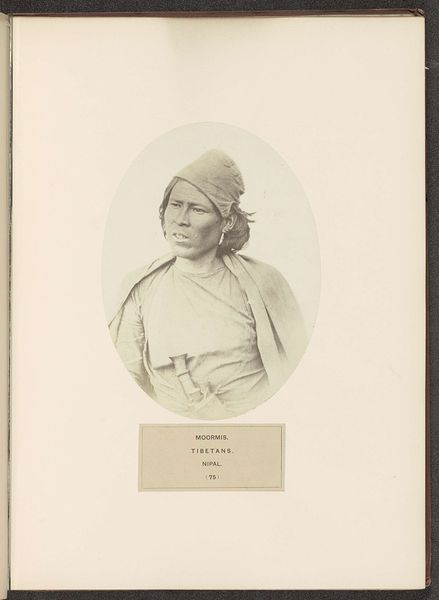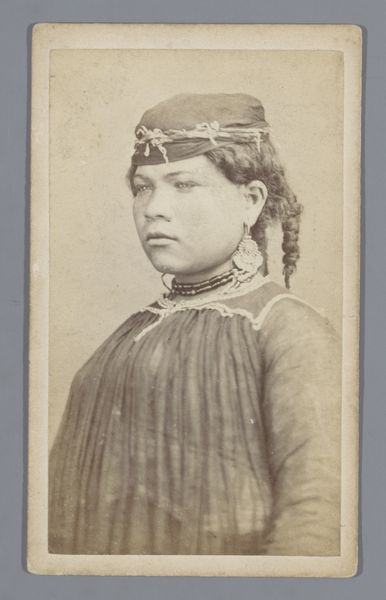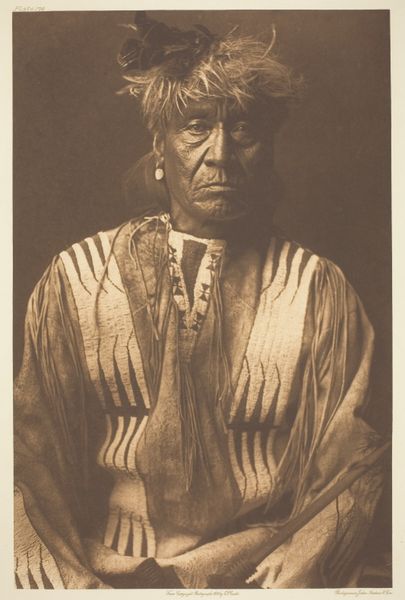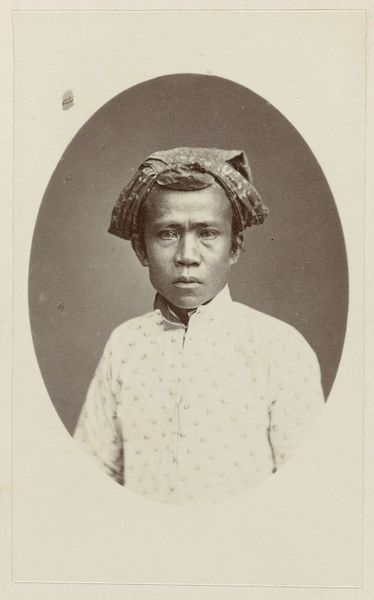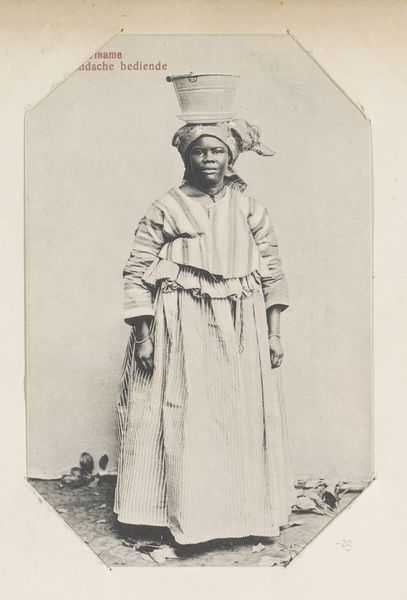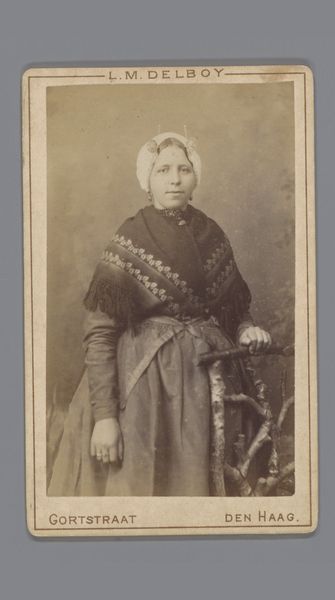
photography
#
portrait
#
photography
Dimensions: height 175 mm, width 129 mm
Copyright: Rijks Museum: Open Domain
Curator: Here we have an interesting piece—a photograph entitled "Portret van een onbekende Gurung man uit Nepal," dating from before 1868, created by Benjamin Simpson. The work's inscription identifies the subject's community, labeling him as a member of the "Goorung Military Tribe" residing in "Nipal." Editor: He has such a direct, unwavering gaze! It’s the kind that burns right through the layers of time and context, landing squarely on you. Almost confrontational. Curator: Absolutely, and I think we can unpack some of that perceived intensity through a materialist lens. Early photography, particularly ethnographic photography like this, was often entangled with colonial power dynamics. Consider the labor involved—the photographer, the sitter, the chemical processes, and the distribution of images like this. The photograph wasn't simply capturing a likeness, but participating in a system of knowledge production, framing how people in the West would come to "know" communities like the Gurung. Editor: That's a chilling, yet important point, the way it participated in objectifying this man. I also feel an intimacy, that kind only a photographic portrait can conjure. The softness in his eyes, and what seems like careful, deliberate styling in his hair... those ring true despite its historic framework and inherent power dynamics. What's fascinating about early photography is the tension that plays between what feels raw and what is, by necessity, highly mediated. It is beautiful, but that doesn't preclude the historical implications you point out, right? Curator: Exactly, it's about recognizing that inherent contradiction and those uneven power dynamics and teasing out the threads of production, consumption, and representation woven into a seemingly straightforward image. Editor: It makes you wonder about the unseen parts, you know? Who chose his clothes, dictated his stance? How was he compensated—if at all? Every picture has a story behind it, and every story is someone's point of view. A fascinating lens through which to explore cultural biases and our evolving interpretation of photographic art! Curator: Precisely! This piece really drives home that point.
Comments
No comments
Be the first to comment and join the conversation on the ultimate creative platform.
